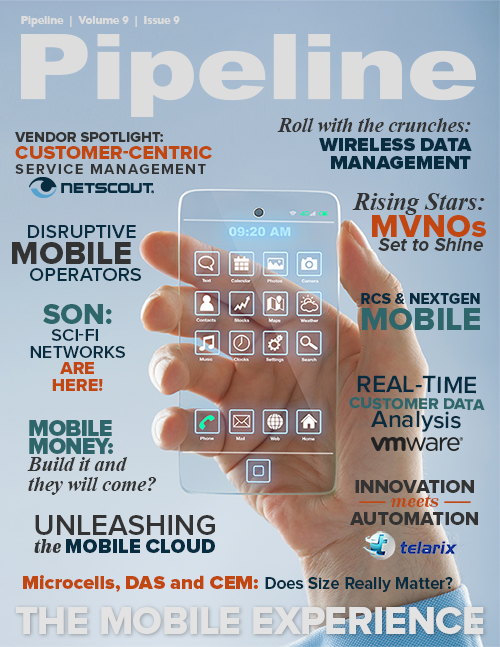Unleashing Mobile Intelligence in the Cloud
Enterprise collaboration
Popular enterprise-collaboration apps can be enhanced with real-time communications and context APIs to improve intra-company communications and drive higher productivity. For example, business users of Salesforce.com’s Chatter application can easily locate their field-based colleagues on a map, check their presence status, invite them to a conversation by sending a text message from the app, confirm their participation by receiving a text reply, and set up an instant conference call within the app. That’s possible thanks to the location, presence, messaging, and call-control intelligence inherent in the mobile network.
Alternatively, the mobile network could provide a composite API, or mash-up, to the collaboration app that combines these individual functions into a single “instant conference” API service that checks context (calendar availability, mobile presence, location), sends a notification through multiple channels (SMS, IM, email), receives confirmation from the invited participants, establishes the call based on the given parameters, and generates the appropriate settlement events for charging. This is all accomplished regardless of the end-user device because the functionality is network-centric.
Customer relationship management
Mobile network intelligence can also be leveraged to enhance sales performance and customer service via customer relationship management (CRM) apps. For example, a network’s location and geofencing capabilities could be used to match the location of field sales representatives with that of customers, and to alert a sales rep via SMS if a particular customer hasn’t been called on for some time. Following the sales call, the SMS API could be used again to update the customer’s record on the CRM system or assign specific actions to sales support staff, such as providing a quote.
Field-force automation
Organizations with large numbers of field staff are always looking for ways to increase productivity, efficiency and job completion rates and improve customer service. The location and geofencing functionality of the mobile network can help update field-force work schedules based on real-time location information. SMS APIs can be used for automatic machine-to-person communications that provide up-to-date job information to field operatives, or person-to-machine messaging for submission of incident reports, job completion notices, etc.
Mobile marketing
Retailers and advertisers that want to reach customers with more relevant, context-aware marketing offers and advertising messages can leverage mobile network intelligence such as small-cell zonal presence, location/geofencing, user consent, text/multimedia messaging, and call control to help enhance their efforts. For example, when an opted-in consumer (whose consent has been obtained) enters the vicinity of a retail outlet where he or she is a loyalty-club member, geofencing or zonal-presence APIs can be leveraged to trigger the automatic delivery of a coupon to the consumer’s handset via MMS and a 2D bar code or a simple SMS with a text-based redemption code. Additionally, a payment API can be used to provide a convenient means for consumers to pay via their mobile phone bill, increasing sales conversion rates for the merchant.
The capabilities of the mobile network could be leveraged as well to allow the provision of a click-to-be-called button embedded within a web banner advertisement or email marketing campaign, yielding a closed-loop, direct-to-consumer capability within such marketing campaigns. A location API would ensure that the click-to-be-called request is routed to the outlet located closest to the consumer, and a payment API could be used during the resulting sales transaction.
Because standard network capabilities are used, these services can be enabled for all handset types without the need for a device client app, allowing the solution to easily scale to reach the maximum number of potential users.



















